Most health experts will tell you that the more greens you eat, the less likely you are to develop chronic diseases, such as cancer and heart disease. The problem? Most Americans don’t eat nearly enough nutrient-packed dark-green vegetables, so they can’t take advantage of their myriad health benefits, which include reducing inflammation, enhancing detoxification and helping maintain a proper acid-base balance in the body.
One easy way to get more greens is to take supergreens supplements. “Consuming greens supplements, such as powders and juices, can be a convenient and reliable way to help you get your necessary daily intake of green vegetables — and then some,” says Michael B. Wald, MD, PhD, ND, director of nutritional services at Integrated Medicine & Nutrition in Mount Kisco, N.Y.
In recent years, supergreens-based products have become something of a trend. Juice companies and retailers such as Naked, Odwalla and Jamba Juice increasingly use supergreens in their concoctions; natural markets and retailers like Trader Joe’s are devoting more shelf space to green drinks; and Hollywood starlets like Gwyneth Paltrow and Christy Turlington are popularizing supergreens detox drinks.
Get Your Greens Here
So what, exactly, are supergreens?
The most common types include young cereal grasses, including wheat, barley and alfalfa, along with algaes, such as spirulina and chlorella. Most are edible in their natural, unprocessed form, but since most American eaters are disinclined to chew on barley grass or add sea greens to their salad bowls, they are commonly offered in powder, capsule or juice form.
Such greens products are typically made from grasses and algae harvested at their peak nutritional state. They are then dried at low temperatures and powdered. Sometimes, in the case of grasses, they are picked fresh for processing in juicing machines.
“At the early grass stage of their growth, grasses are actually closer to vegetables than grains in nutrient composition.”
“At the early grass stage of their growth, grasses are actually closer to vegetables than grains in nutrient composition,” says Kelly Morrow, MS, RD, associate professor in the Department of Nutrition and Exercise Science at Bastyr University in Kenmore, Wash. As the cereal grasses mature into the grains used to make bread, says Morrow, the nutrient makeup of the plant is altered: “There is a loss of some vitamins, such as A and C, and a rise in starch levels.”
Most algae products on the market are now grown under strictly controlled conditions — most often on inland ponds in sunny areas such as Hawaii and California — to minimize risks of contamination by bacteria and environmental toxins like mercury.
Health Benefits of Supergreens
Because more than a pound of greens may be used to make a mere ounce of powder, cereal grasses and algae can offer a greater nutrient density by volume than the various green vegetables you’ll find in the supermarket produce department, according to Carolyn Dean, MD, ND, medical director of the Nutritional Magnesium Association.
Cereal grasses and algaes are superabundant in chlorophyll, a chemical that lends plants their emerald hue and various nutritional benefits.
“Chlorophyll can help escort cell-damaging toxins like dioxin from the body via the liver,” says Victor S. Sierpina, MD, Laura Nell Nicholson Family Professor of Integrative Medicine at the University of Texas Medical Branch. “Additionally, it’s a key compound for improving the function of essential detoxification pathways,” he says. Also, many experts believe that chlorophyll can assist healthy blood flow because the chlorophyll molecule is similar in structure to hemoglobin.
Similar to their leafy green and cruciferous counterparts, cereal grasses and algae are notable for their stellar oxygen radical absorbance capacity (ORAC) score — a test-tube analysis that measures a food or chemical’s ability to squelch nefarious free radicals.
As free radicals or oxidants bounce around the body, they wreak havoc on cells, raising the risk for a number of chronic maladies including cancer, heart disease and Alzheimer’s. “A daily shot of greens can provide an arsenal of phytonutrient antioxidants to help neutralize these free radicals, thus preventing cell disruption,” says Dean.
That healthy dose of antioxidants may also reduce or help repair the oxidative muscle damage associated with exercise, making supergreens helpful for improving recovery from high-intensity workouts.
Chugging down a green drink also has the potential to quell inflammation. “It’s now recognized both clinically and scientifically that chronic inflammation in the body leads to cell, tissue and organ degeneration, and is thus implemented in all diseases,” says Wald. “Green powders contain literally hundreds to tens-of-thousands of plant compounds suspected or well-established to reduce inflammation.”
Further, greens are very alkalinizing, meaning they help restore a healthy acid-alkaline balance in the body.
Brendan Brazier, author of Thrive Foods, says that the modern American diet, replete with acidifying foods such as coffee, soft drinks, fast-food burgers and jumbo muffins, disrupts the body’s preferred alkaline state. “An acidic environment within the body can play a role in a number of diseases and could lead to the leaching of calcium from bones, promoting kidney stones and osteoporosis,” Brazier says.
Supplement Savvy
So, what’s the best way to get your supergreens: a powdered greens product, a capsule or fresh juice?
According to Wald, the upside of choosing a powdered product is you’ll get a larger dose of the good stuff. “Taking a scoop of a green powder might be the equivalent to what is found in 30 to 50 capsules,” he says. But if you’re not smitten with the taste or consistency of powdered green products, he says that capsules are a good option: “Taking capsules is way better than taking no greens at all.”
For most people, says Wald, dried cereal grasses are far easier to deal with than fresh cereal grasses, which must be juiced and consumed shortly afterward to obtain all their healthful compounds. “The dehydration process used for powders actually maintains much of the original nutritional and enzyme content,” he says.
Premixed green juices and smoothies are convenient, but will generally contain less variety and total quantity of greens than what you could make yourself at home.
“A store-bought greens juice could be mostly apple or some other basic fruit juice with just a speck of greens. Many of the greens juices actually have as much sugar as do sodas.”
“A store-bought greens juice could be mostly apple or some other basic fruit juice with just a speck of greens. Many of the greens juices actually have as much sugar as do sodas,” says Morrow. Greens smoothies, she adds, may also contain prodigious amounts of sugar and an unknown amount of greens. Morrow suggests reading the ingredient list to make sure greens are one of the first few items listed.
“To get the maximum benefit, it’s best to make your own greens drinks using fresh greens or a reputable powder brand mixed with water,” she says. If you’re looking for a flavor boost, Morrow suggests including a splash of lemon or other juice. (For more ideas, see the “Tasteful Strategies” below.)
While supergreens can provide powerful nutritional benefits, they aren’t a replacement for other vegetables in your diet.
So, what is the recommended daily dose of supergreens? Wald suggests “consuming anywhere from 1 to 6 grams per day of a supergreens product in order to provide a really solid level of plant-based nutrition, one that can cover many healing bases.”
Keep in mind, though: While supergreens can provide powerful nutritional benefits, they aren’t a replacement for other vegetables in your diet. “No single group of greens can provide the full breadth of necessary nutrients and antioxidants,” says Morrow. So it’s still vital to consume a wide variety of fresh vegetables and fruits.
List of SuperGreens
Grasses
- Wheat Grass: The poster child of the supergreens movement, wheat grass is the form young wheat plants take before they mature enough to produce seed heads and wheat-grain kernels. This potent young plant is about 70 percent chlorophyll and boasts impressive amounts of amino acids, beta-carotene, fiber, vitamin C, B vitamins and antibacterial properties. It’s also been shown to help destroy cancerous cells and is a leading source of vitamin K, which helps blood clotting and also may be associated with reduced risk of developing type 2 diabetes. Wheat grass can be grown at home and, using a specialized juicer, juiced directly from the raw product. It is also available in powders and capsules.
- Barley Grass: The shoots of the barley plant, barley grass is high in essential amino acids, enzymes and vitamins, particularly C, K and E. It’s also packed with minerals, including iron, calcium and magnesium. It’s available in juice, powder and capsule form, but the juice is not as widely available as wheat grass is. “The main reason I use barley grass in powder form is the high levels of superoxide dismutase, which is a powerful antioxidant that scavenges cell-disrupting free radicals in the body,” says Carolyn Dean, MD, ND, medical director of the Nutritional Magnesium Association. Although barley and wheat grasses are often considered safe for those with gluten intolerance, many experts advise those who are highly gluten sensitive to consume them with caution, since some potential for gluten contamination does exist.
- Alfalfa Grass: Widely cultivated as a pasture and hay crop, alfalfa grass resembles clover, with clusters of small purple flowers. Alfalfa grass is rich in calcium, magnesium, potassium, zinc and iron, plus a host of other healthy minerals and eight essential amino acids. Alfalfa is also an excellent source for beta-carotene. “The calcium in alfalfa is particularly well absorbed by the body, and since alfalfa is in the legume family, it’s a source of protein,” says Dean. Grasses such as alfalfa also provide lutein, a potent carotenoid phytonutrient that helps protect eyesight by offsetting some of the harmful effects of the sun’s UV rays. Alfalfa is not as widely available in its grass state, but it is available as a juice, powder and capsule.
Algaes
- Spirulina: Spirulina is a single-celled, freshwater blue-green algae that’s been harvested from lakes for thousands of years in many parts of the world. Spirulina is about 60 percent protein by weight and has an abundance of other nutrients, including vitamin K and iron. It is also rich in beta-carotene, even more so than carrots (it’s not orange looking only because of its abundance of green chlorophyll). Preliminary research suggests that a daily spirulina fix can help improve brain functioning and reduce coronary-health woes by quelling inflammation and lowering serum cholesterol. Phycocyanin, the antioxidant-rich blue pigment in spirulina, has been shown to halt the spread of cancerous cells. “Spirulina may also act as a prebiotic to help probiotics grow in the gut, thereby improving digestive health,” says Victor S. Sierpina, MD.
- Chlorella: It was once impossible for humans to absorb nutrients from chlorella because of its thick cell walls. Modern technology can now crack those cell walls, releasing “chlorella’s essential fats, vitamins, minerals and phytonutrients that otherwise would resist digestive enzymes,” says Michael B. Wald, MD, PhD, ND. Although more chlorella-related studies are needed, initial research has shown that chlorella may have positive effects in those with fibromyalgia, says Sierpina. There is some debate about the merits of algae as a vegan source of vitamin B12, which is predominantly found in foods of animal origin. Experts like Wald believe that the type of vitamin B12 in algaes is not bioavailable to the human body, while many others, including vegan triathlete Brendan Brazier, author of Thrive Foods, assert that it is.
Tasteful Strategies
Looking for ways to sneak supergreens into your diet? Here are a few options:
- Blend into a morning (or postworkout) smoothie to boost muscle recovery.
- Whisk into dressings for a supercharged salad.
- Stir into plain yogurt along with chopped nuts for a healthy snack.
- Try making your own energy bars with a base of dried fruit and greens powder.
- If the taste still turns you off, try capsules, or consider creating your own custom greens mix from scratch. Carolyn Dean, MD, ND, medical director of the Nutritional Magnesium Association, recommends this recipe as a base (store in freezer to preserve freshness and nutritional might):
Step one: Mix equal parts powdered wheat grass, barley grass and alfalfa grass with half-part spirulina.
Step two: Place 1 to 2 tablespoons in 8 ounces of water and shake. Or blend with protein powder, fruit, chia seeds and/or spices such as cinnamon and ginger for added flavor. - If all else fails, you might also consider the macho approach: Mix greens powder with water — then slug it back fast, and shake off the resulting shudder, knowing your body will thank you and your bravery will be rewarded with good health.
Buyer Beware
When buying greens products, read labels carefully to make sure you’re getting the most value for your dollar. Here’s what sets the best greens products apart:
Organic: Similar to fresh fruits and vegetables, greens supplements have the potential to soak up pesticides from their growing environments. And because a huge amount of raw greens are used to make greens powders, there is significant potential for pesticide residues. When possible, select brands with organic greens in the ingredient list.
Concentrated: A reputable greens product should clearly state how much of the supplement is actually greens. With the exception of those containing protein powders, which are bulky, choose a greens product in which at least 50 percent of the mass of the powder or capsule is greens. This leaves room for add-ins like probiotics, berry blends and digestive enzymes, the latter of which may enhance the digestibility of the nutrients found in the product. Keep an eye out for cheap fillers like soy lecithin, which may result in fewer greens in your cup.
Clean: Avoid any product with artificial sweeteners, artificial flavors or processed sugars. If choosing algae products like spirulina and chlorella, select only those that have been tested and determined to be free of contaminants such as PCBs and mercury.
Palatable: Even though greens foods can be highly beneficial to developing children, many kids will cry foul at the thought of drinking a green liquid. And many adults simply dislike their taste. Some brands now offer supergreens mixes in alternative all-natural flavors and colors, like chocolate or berry, to appease sensitive taste buds.
7 Supergreens to Try
Getting your daily supergreens fix doesn’t mean you have to choke down a powdered mix that tastes like chalky compost. Manufactures have worked over the years to greatly improve mixability and flavors. Many companies now even include other healthy perks such as antioxidant-rich berry mixes, protein powder, probiotics and fiber blends. Here are six powdered mixes worth trying.
Note: Each of these powders was tested by whisking the suggested serving size with 6 ounces of filtered, cold water.
- Amazing Grass ORAC Green SuperFood (www.amazinggrass.com)
Consider this the Arnold Schwarzenegger of supergreen powders. Boasting 3985 mg of Amazing Grass’s Green SuperFood blend, including spinach, wheat grass and spirulina, along with a powerful antioxidant blend containing everything from green tea extract to blackberry concentrate, it delivers a whopping ORAC value of 15,000 per serving. In comparison, 100 grams of raw blueberries (about 2/3 cup) has an ORAC of 6,552. Another perk is less than 1 gram of sugar in each scoop. There is a subtle but not overpowering berry flavor, but the powder produces a slightly grainy drink so consider using a blender. Sweetened with stevia. - Life Greens (https://shop.lifetime.life/life-greens)
Life Greens™ is a potent blend of fruit and vegetable antioxidants, prebiotic fibers, digestive enzymes, and probiotics formulated to support digestive and immune health. The blend includes over 40 different freeze-dried fruits and vegetables and is non-GMO, vegan-friendly, and flavored and sweetened naturally.
- MacroLife Naturals Macro Greens (www.macrolifenaturals.com)
Although it mixes easily with water, this powder does have a definite green, earthy taste to it. If that is off-putting to you, consider blending it into a fruit smoothie. Add-ons include probiotics, herbs, digestive enzymes and antioxidants. Sweetened with stevia. - Go Greens Apple Melon (www.togobrands.com)
Made mostly with organic veggies and fruits, this product makes a tangy-flavored drink without the unpleasant gritty texture. Convenient tube packages make it easy to give your water bottle a shot of greens on the go. Fortified with vitamin D. Sweetened with stevia. - Barlean’s Greens ( www.barleans.com)
This is the most neutral tasting of the powdered mixes featured here, which for greens newbies can be a definite plus. A deep, emerald color telegraphs the health benefits, which include a wide array of land and sea greens as well as omega-3-rich flax meal. - Living Fuel SuperGreens (www.livingfuel.com)
Each serving delivers a host of greens, including dulse seaweed, kale and broccoli, plus plant protein, chia seeds, essential amino acids, and a laundry list of vitamins and minerals. The flavor is relatively mild with a hint of “green” flavor. For best results, whirl into a smoothie (as opposed to just using water and a cup). - Garden of Life Perfect Food Greens (www.gardenoflife.com)
To up the health ante, this mix is chock-full of raw, organic cereal grasses, along with probiotics, organic sprouted quinoa and lentil. The drink is very green and unsweetened, so don’t expect some fruity sweet flavor. If you’re sensitive to its vegetal flavor, take it with juice. Like most green powders, settling often occurs. So if you don’t chug it all at once, you’ll likely need additional stirring.
This article has been updated. It was originally published in the April 2012 issue of Experience Life.
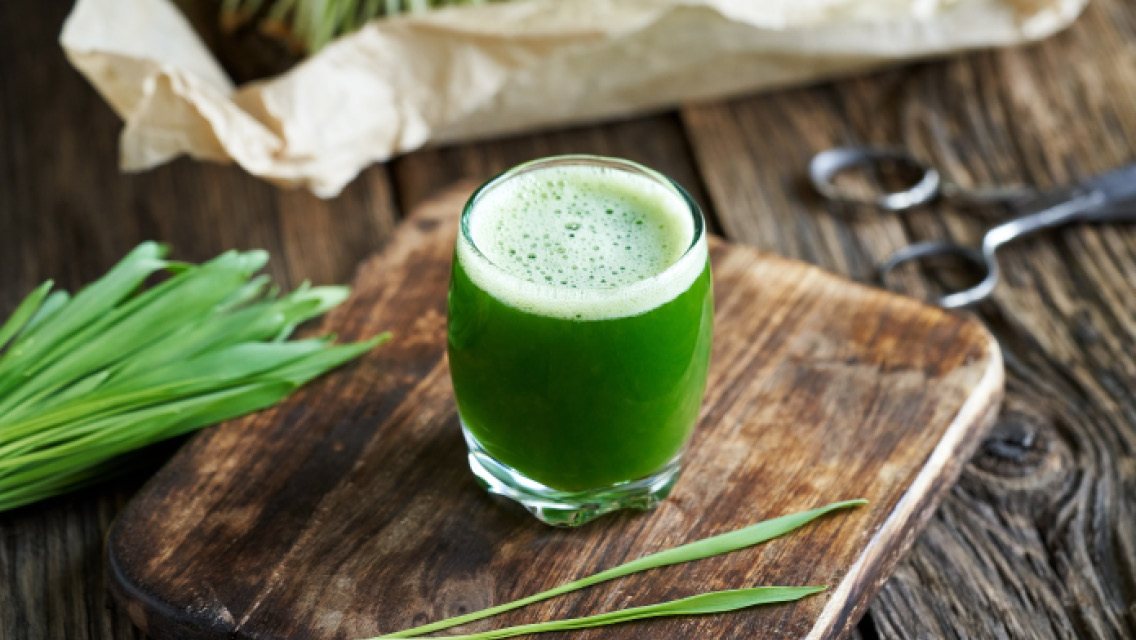
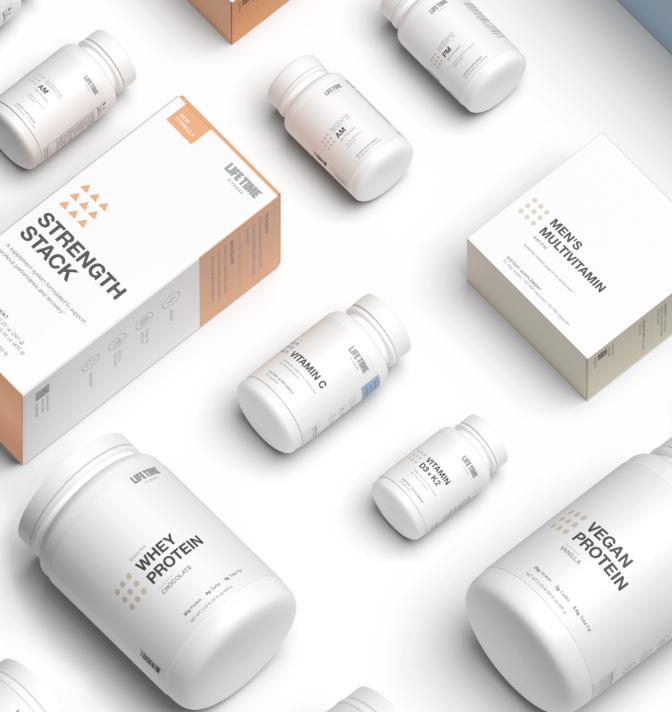
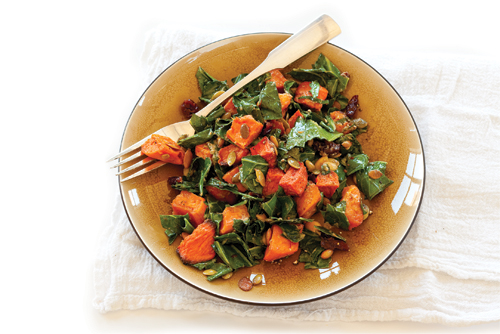
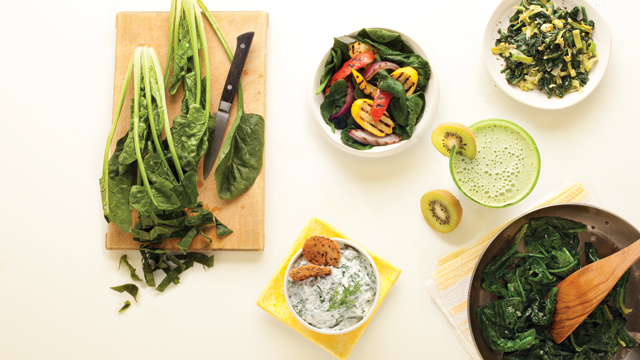
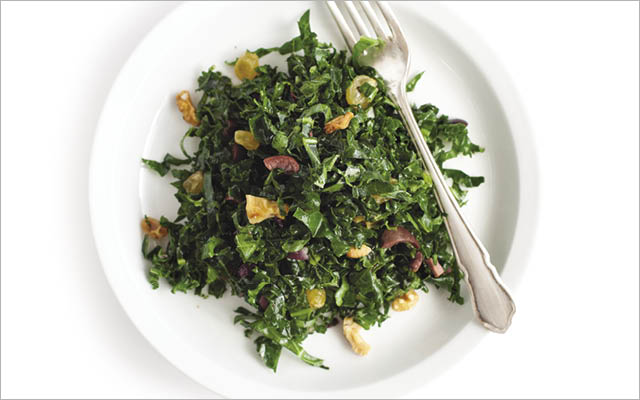
This Post Has 0 Comments